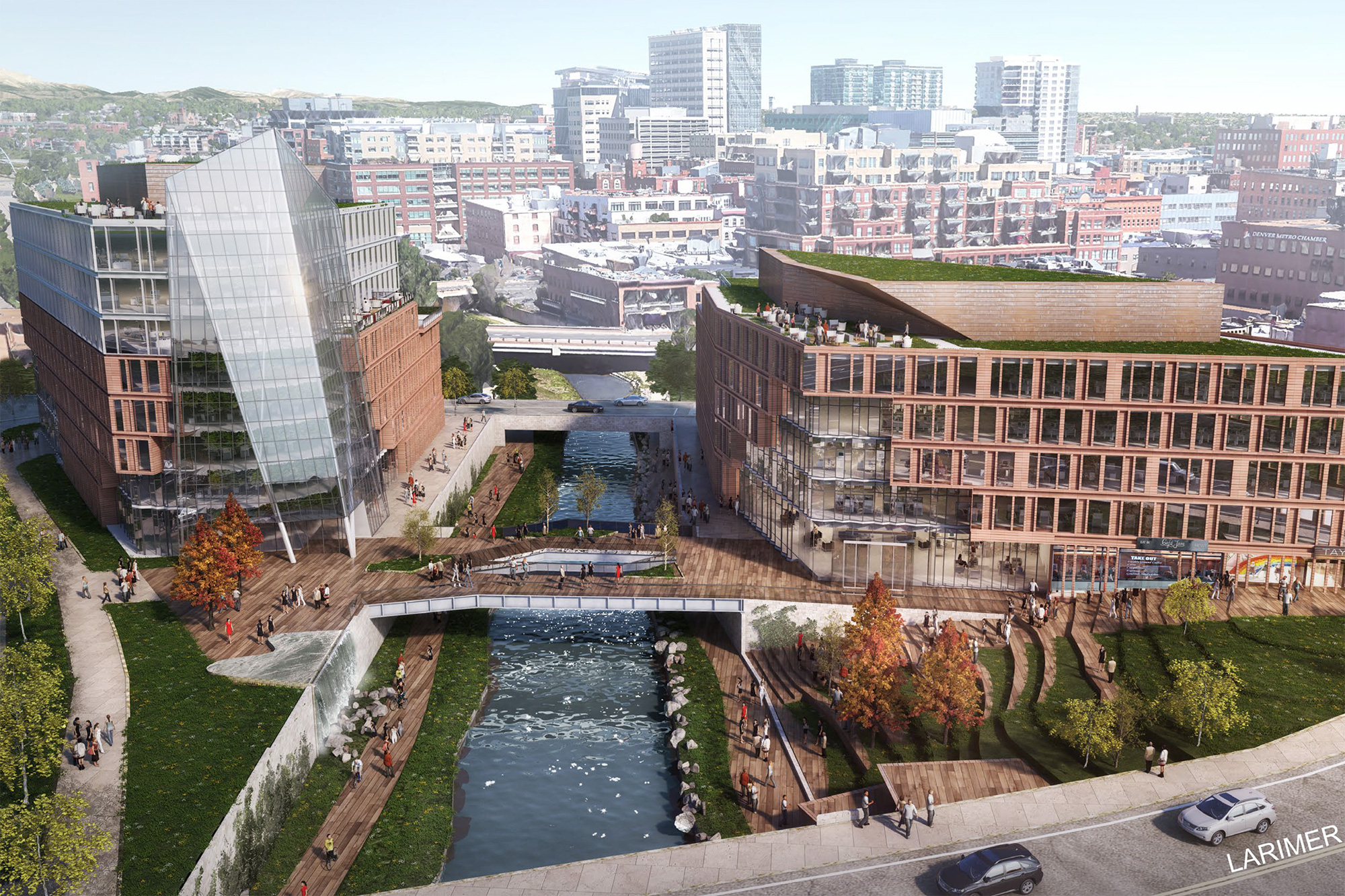The 16th Street Mall recently celebrated its 25th anniversary so it is time to take a serious look at the Mall’s future, what it was meant to be, what it has become, and what it should be in the future. To help with that, the City and the Downtown Denver Partnership hired the Urban Land Institute to provide some guidance regarding the Mall before the full 16th Street Plan project kicks off later this year. A few of the panel’s preliminary recommendations were just released. Here’s an article by the Post‘s Margaret Jackson about some of those recommendations: Expert Eyes Analyze 16th Street Mall Needs.
While replacing the “teletubby” trash bins and flower pots was one of the panel’s recommendations, their full report has not yet been released and will likely address some weightier issues. One of the decisions facing the Mall involves the granite pavers which RTD wants to replace with concrete. The ULI panel said keep the granite. I agree. One of the Mall’s special characteristics is the storefront-to-storefront paving in a single high-quality material. Replacing the bus lanes with concrete would demote the Mall to just another street with fancy sidewalks. Other issues facing the Mall include the street trees, travel lane alignment, and the quality of the retail fronting the Mall–just to name a few.
One of the points I stressed during my interview with the ULI panel was that we need to view the Mall within a larger Central Denver context. The Mall should not be viewed only as a means to disperse throughout Downtown commuters from RTD bus and light rail stations. We need to view the Mall as one part of a larger Central Denver pedestrian accelerator and transit system that includes the proposed Downtown Circulator and future street car lines. By upgrading the Mall and Downtown Circulator busses to street cars and operating them as a single two-way loop system instead of two stand-alone linear systems, we will have put in place the framework for a broader Central Denver street car system—just like the extensive one we used to have 100 years ago. Add to that Downtown street car loop future extensions south along Broadway/Lincoln, northeast and southwest along Larimer, northwest along 15th Street/29th Avenue, east and west along Colfax, and southeast to Cherry Creek, and we will have a transit system that serves the most densly populated districts in the entire metro area and that stimulates billions of dollars in economic development along the way. If we want to tie our Center City urban districts together and create a seemless urban zone surrounding and including Downtown, that is what we need to do—and the 16th Street Mall is where we start.
So, while issues like planters and trash cans and granite pavers are important, now is the time to envision the 16th Street Mall as something much bigger and better for Central Denver. It’s not something we’ll necessarily achieve in the near-term, but if we don’t imagine it and set it as our goal now, we’ll never achieve it. Is Denver ready to begin talking about its post-FasTracks future and bringing back its inner-city street car system? I am.










Street cars are quiet. They would enable us to keep the current pavers and they look good. Before you object to the idea find out the type of vehicles we're talking about. This isn't any thing like "elevated rail or monorail. Check out what has already been posted on this site about Portland and Seattle.
I like how Annon 5/23/2008 01:56:00 PM uses a monorail systen from the early 60's to argue against it! I was refering to something more like this
http://www.railway-technology.com/contractor_images/selectron/2_las_vegas_monorail.jpg
The "support structure" doesnt look all that large to me……
Then there is the "submerged train" idea.
http://gothamist.com/attachments/jen/2007_04_2ndavesub.jpg
Yeah that would be nice! ha! I think not.
There are some pretty cool subway systems around the world, too. I've read about them, and been on them. Here are some: http://upload.wikimedia.org/wikipedia/en/thumb/3/3a/Nanjingmetrotrain.jpg/800px-Nanjingmetrotrain.jpg
http://upload.wikimedia.org/wikipedia/commons/thumb/b/b1/Chervonyi_Khutir.jpg/800px-Chervonyi_Khutir.jpg
These aren't dark, depressing, and dingy! I think metro Denver is one of the BEST cities in the country, if not the world. We need to prepare ourselves for future needs, so metro Denver can remain one of the best cities, and even excel to be THE best.